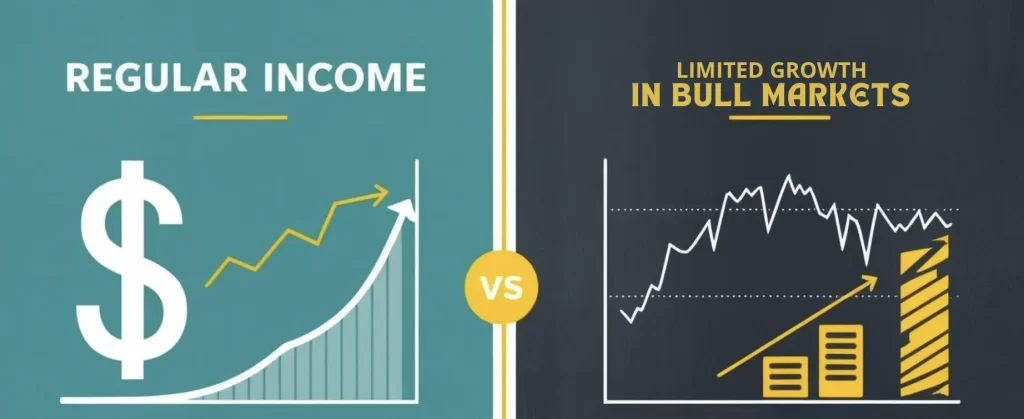Introduction
As a beginner in the world of investing, you may have come across the term “dividend stocks.” Dividend stocks are shares of companies that distribute a portion of their earnings to shareholders in the form of dividends. This not only provides you with a source of passive income but also allows you to share the company’s success. Understanding how dividend stocks work is essential for those seeking to enhance their investment portfolios, especially in the Indian stock market, where dividends play a crucial role.
The importance of dividends cannot be overstated; they can provide a steady income stream, particularly during retirement or in times of market volatility. In this guide, we aim to demystify the concept of dividend stocks and equip you with the knowledge needed to start your investing journey with confidence. Whether you are a young professional or a retiree, this guide is tailored to beginners who are seeking stable investment options and long-term strategies involving dividend stocks.
What are Dividend Stocks?
Dividend stocks are shares of companies that return a part of their profits to shareholders in the form of dividends. Most often, these dividends are paid quarterly, but they can also be issued semi-annually or annually. Companies that pay dividends tend to be well-established firms with a consistent track record of profitability.
There are various types of dividend stocks:
- Regular Dividends: The most common type, paid out consistently.
- Special Dividends: One-time payments that are usually higher than regular dividends, often made in exceptional circumstances.
- Perpetual Dividends: This type is paid out indefinitely and is typically associated with preferred stock.

Investing in dividend stocks can be an excellent way to build wealth over time while also benefiting from regular income. Its like buying a house for investment, you can benefit from the rent from the house as well as price appreciation of the property.
How to Evaluate Dividend Stocks
When evaluating dividend stocks, several key metrics can provide insight into a company’s ability to sustain and grow its dividends:
- Dividend Yield: This is the annual dividend payment divided by the stock price. A higher yield indicates a more attractive dividend.
- Dividend Payout Ratio: This ratio shows what portion of a company’s earnings is paid out as dividends. A lower ratio may suggest that the company has room to increase dividends in the future.
- Dividend History: A strong history of dividend payments can indicate a company’s reliability. Companies that continually pay rising dividends signal financial stability.
Let’s look at top 10 stocks as of 7 Jan 2025, based on dividend yield.

Companies like Vedanta (9.83% yield), IOCL (9.03% yield), and Coal India (6.73% yield) lead the pack, showcasing consistent payouts. Notable performers like Coal India and BPCL combine solid yields with strong profitability, boasting Return on Equity (ROE)s of over 40%. For growth-oriented investors, stocks like IOCL and HPCL exhibit robust earnings growth rates (EGR) alongside reliable dividends. One needs to look at consistency of dividend payout, EGR and ROE along side dividend yield to choose dividend paying stocks.
Advantages and Risks of Investing in Dividend Stocks
Advantages
- Regular Income: Dividend stocks provide a reliable income stream, which can be used for reinvestment or personal use.
- Potential for Capital Appreciation: Many dividend-paying companies also have a track record of capital appreciation, meaning your investment can grow over time.
- Reduced Volatility: High dividend stocks are often seen as less volatile, especially in bear markets. They tend to be more stable compared to growth stocks.
Risks
- Dividend Cuts: If the underlying company suffers financial difficulties, it might reduce or eliminate its dividend payout.
- Business Cycles: Economic downturns can negatively impact a company’s ability to pay dividends.
- Limited Growth in Bull Markets: Dividend-paying stocks may not perform as well during market booms, where growth stocks lead the charge.

Building a Diversified Portfolio with Dividend Stocks
Creating a diversified portfolio minimizes risks associated with investing. Here are some tips:
- Asset Allocation: Aim to mix dividend stocks with growth stocks to balance income and capital appreciation. A common strategy is to maintain 40% in dividend stocks and 60% in growth stocks.
- Balance Between Sectors: Diversifying across sectors can mitigate risks from sector-specific downturns. For example, combining blue-chip dividend payers with mid-cap stocks can yield better results.
- Global Exposure: Consider including international dividend stocks in your portfolio to tap into different economies.
Trends in Dividend Stocks in India
Recent Policies
With the government’s effort to promote a conducive environment for investment, dividend policies among companies have been positively influenced. Many companies are encouraged to maintain or even increase their dividends as they report stronger earnings.
Economic Factors
Economic indicators such as the RBI’s interest rate changes can also heavily influence dividend stock strategies. A lower interest rate often makes dividend-paying stocks more attractive since the yields on fixed deposits and bonds would diminish.
For instance, the RBI rate cuts around covid highlighted the appeal of dividend stocks as more investors look for higher returns in the stock market than in traditional fixed-income instruments.
Conclusion
In conclusion, dividend stocks present a promising opportunity for both new and seasoned investors seeking stable income and long-term growth. By evaluating key metrics, being aware of the inherent risks, and recognizing the latest trends in the Indian market, you can strategically invest in dividend-paying stocks that align with your financial goals. Start small, and remember that continuous education is paramount for successful investing.
You can subscribe to this and other stock market learning resources to help you become a stock market wizard!
FAQs
Dividend stocks are shares of companies that regularly distribute a portion of their profits to shareholders in the form of dividends. These payments provide investors with a steady income stream in addition to any potential capital appreciation from the stock’s price increase.
Investing in dividend stocks can offer several benefits:
Regular Income: They provide a consistent income source, which can be particularly appealing during market volatility.
Financial Stability: Companies that pay regular dividends often exhibit strong financial health and stable earnings.
Compounding Returns: Reinvesting dividends can lead to compounded growth over time, enhancing overall returns.
When assessing dividend stocks, consider the following factors:
Dividend Yield: This ratio indicates the annual dividend payment relative to the stock’s current price. A higher yield may suggest attractive income potential.
Dividend Payout Ratio: This measures the proportion of earnings paid out as dividends. A sustainable payout ratio often falls between 30% and 60%.
Company’s Financial Health: Examine metrics like revenue growth, profit margins, and debt levels to ensure the company’s ability to maintain dividend payments.

